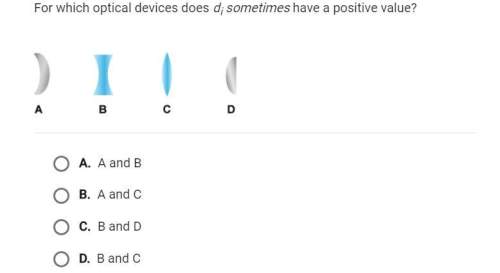
Physics, 16.03.2020 22:02 Anaaguayo954
John and Linda are arguing about the definition of density. John says the density of an object is proportional to itsmass. Linda says the object's mass is proportional to its density and to its volume. Which one, if either, is correct?
A. They are both wrong
B. John is correct, but Linda is wrong
C. John is wrong, but Linda is correct
D. They are both correct.
E. John must be wrong, because Linda always wins these arguments.

Answers: 3


Other questions on the subject: Physics

Physics, 22.06.2019 05:40, thomasalmo2014
Unpolarized light of intensity i_0=750w/m^2 is incident upon two polarizers. after passing through both polarizers the intensity is i_2=280w/m^2. (a) what is the intensity of the light after it passes through the first polarizer in w/m^2? (b) write an equation for the angle between the polarizers in terms of the initial (i_0) and final (i_2) intensities. (c) find the angle between the polarizers in degrees.
Answers: 3


Physics, 22.06.2019 08:00, kaylaamberd
Aheat engine running backward is called a refrigerator if its purpose is to extract heat from a cold reservoir. the same engine running backward is called a heat pump if its purpose is to exhaust warm air into the hot reservoir. heat pumps are widely used for home heating. you can think of a heat pump as a refrigerator that is cooling the already cold outdoors and, with its exhaust heat qh, warming the indoors. perhaps this seems a little silly, but consider the following. electricity can be directly used to heat a home by passing an electric current through a heating coil. this is a direct, 100% conversion of work to heat. that is, 19.0 \rm kw of electric power (generated by doing work at the rate 19.0 kj/s at the power plant) produces heat energy inside the home at a rate of 19.0 kj/s. suppose that the neighbor's home has a heat pump with a coefficient of performance of 4.00, a realistic value. note: with a refrigerator, "what you get" is heat removed. but with a heat pump, "what you get" is heat delivered. so the coefficient of performance of a heat pump is k=qh/win. an average price for electricity is about 40 mj per dollar. a furnace or heat pump will run typically 200 hours per month during the winter. what does one month's heating cost in the home with a 16.0 kw electric heater? what does one month's heating cost in the home of a neighbor who uses a heat pump to provide the same amount of heating?
Answers: 2

Physics, 22.06.2019 09:00, winterblanco
The pressure proportional to the area a- inversely b- directly c- increase d-decrease
Answers: 2
You know the right answer?
John and Linda are arguing about the definition of density. John says the density of an object is pr...
Questions in other subjects:

Advanced Placement (AP), 25.04.2020 01:57

Physics, 25.04.2020 01:57


Computers and Technology, 25.04.2020 01:57

Mathematics, 25.04.2020 01:57

Mathematics, 25.04.2020 01:57


Spanish, 25.04.2020 01:57

English, 25.04.2020 01:57

History, 25.04.2020 01:57




